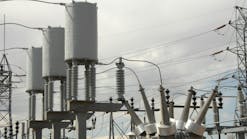Proving the Point: DOE Study Supports Calls for Transmission Upgrades
Several of the "Global Viewpoint" columns I’ve written in the past have focused on current challenges transmission grid owners and operators face and the risks that will increase without major investments and upgrades. The U.S. electricity transmission system needs new structures, wires and substations, upgrades to existing infrastructure and more grid-enhancing technologies (GETs) to support electrification and the transition to a low or no carbon future. This isn’t just my opinion or that of a lot experts much smarter than me, this statement is backed up by the U.S. Department of Energy (DOE). In late February, the DOE released its second draft of the National Transmission Needs Study that reveals the various needs in 13 regions of the country. Those needs include improving reliability and resiliency, alleviating congestion, relieving high-priced areas, adding delivery capacity and more.
One of the study’s main purposes is to help the DOE decide where to focus transmission infrastructure funding that’s available through the Infrastructure Investment and Jobs Act, signed in late 2021, and the more recent Inflation Reduction Act, signed in August, 2022. The study is also a source of insight to any entity or person interested in learning more about specific transmission issues and how the grid could benefit if these needs are addressed.
Because this study will impact funding decisions and long-range infrastructure planning, I’m using this month’s column to reveal some of the major findings. This latest version of the Needs Study is 191 pages long, and I’ll confess…I didn’t read the entire study. I looked closely at the high-level findings for each region and created the table below that illustrates those findings.
There are 10 major “needs” revealed in the study. The most common is “increase transfer capacity with neighboring regions to meet projected generation and load growth.” This need showed up in 11 of the 13 regions. It is not listed as a need in Texas or the Midwest. A couple of other major needs are “improve system reliability and resilience” and “increase transmission deployment/capacity within region to meet projected generation and load growth.” These needs appeared nine times under various regions’ needs assessment.
It’s important to note a couple of things about this latest study. First, it is not the final version. The DOE is requesting feedback on this second draft until April 10, and will release another version once it has reviewed those. Second, that DOE doesn’t intend for this study to “prescribe” solutions or recommendations to the needs it uncovered. The DOE says instead its purpose is to “establish findings of need in order for industry and the public to suggest best possible solutions for alleviating them in a timely manner.” According to the study, an electric transmission need is an “existence of present or expected electric transmission capacity constraints or congestion in a geographic area.”
I suspect most transmission system owners and operators, including electric utilities, had already identified many of the things uncovered in this DOE study, at least for their systems. In addition, they’ve probably been discussing these needs and making plans to meet them for several years. It is, however, interesting to see the similarities and differences among the regions. This information could give insight into how owners and operators improvement plans can positively affect not only their own systems but also systems outside their operating areas. This is good information, because preparing and upgrading the U.S. transmission infrastructure to meet future demands will require much cooperation and collaboration among many entities. You can find the entire report at https://www.energy.gov/sites/default/files/2023-02/022423-DRAFTNeedsStudyforPublicComment.pdf.



